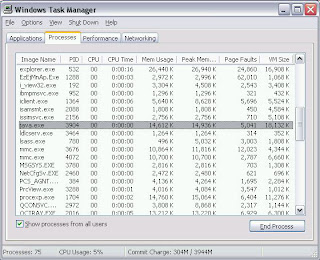
"I fear all we have done is awaken a sleeping giant...", those were the words of Admiral Isoroku Yamoto after the attack on Pearl Harbor, and it also seems to be the feeling people have toward Microsoft and the company's entrance into the "browser wars" we are seeing today.
Back when Internet Explorer first came out, it was a high performance browser with a lot of useful functions. However, those days were finite, and Microsoft got branded with the reputation of producing crappy browsers, a reputation that IE7 and IE8 did nothing to improve upon.
In 2010, however, a long effort to reactivate the company's browser projects showed promise in IE9. As of right now, the application is still in beta form, but it has already shifted the browser market dramatically.
Internet Explorer 9 supports any and every kind of Web standard including a ton of HTML5 features like built-in video, CSS3 for advanced formatting, professional typography and SVG for smoothly resizable graphical elements. IE9 also speeds up the execution of web-based JavaScript programs. This development did manage to alert browser rivals for one top priority today, hardware acceleration. The software itself is accompanied by a push by the industry where Microsoft is educating Web developers and contributing to the development of standards.
It does appear that it may take a little while before web developers trust that Microsoft is serious about browsers again. It also seems that people still using the ancient IE6 will still be wary of upgrading. One thing is clear, Microsoft is paving the way for a new browser future where web sites as well as web applications become more fluid, interactive, polished and powerful.
In terms of Microsoft, Internet Explorer 9 has come in at exactly the right time. The battle with IE has always been against Firefox, however, Google's Chrome has brought in a new era of fierce competition. I think it is safe to say that Google knows a little something about the internet, and the company has a major agenda of web applications to pursue as well as a big enough presence on the web to allow it to make new technologies relevant by building them into its browser and web site.
Early in 2010 Chrome passed Safari by Apple for third place in the rankings of browser usage, and its growth carried to almost 10% of usage in November. A new phase of Google browser ambition is just taking off as well. The Chrome Web Store, which was designed to promote web-based applications and Chrome OS, allows people to find and purchase nearly any web app they want.
Chrome OS is much more of a departure from existing technology than just a browser. Google only offers it built into hardware. Google has done a good job with Android, but it is still unclear as to how well Chrome OS will fare with consumers and businesses.
Firefox's percentage of browser usage has remained consistently flat for most of 2010 thanks to Chrome. There are big things planned for Firefox 4 including many new features and performance enhancements. The problem is that Mozilla failed to meet a 2010 deadline and has since been pushed into 2011.
Apple's Safari has steadily increased in usage share with a few signs that the Windows version is catching on. Safari has been the principle sponsor of the open-source WebKit project, the same project both Safari and Chrome are based on. However, Google is steadily increasing.
One notable feature of Safari 5 that arrived in July was extensions that have the ability to customize the browser's behavior. Opera, the browser currently ranked 5th, is building them into Opera 11 which is the upcoming version of the browser which will match Chrome and Jetpack, the upcoming browser from Mozilla.
Adobe Systems, maker of Flash Player plug-in, had a particularly difficult year but ended on a good note. Apple, not surprisingly, did not budge on their ban of Flash from iOS devices directly, however, it did relent on blocking an Adobe tool that allows you to convert Flash apps to native apps. Google and Adobe forged an alliance due to the very public fight between Apple and Adobe which resulted in Flash support and promotion within Android.
The browser market combines competition between makers with cooperation as all the companies seek to advance the possibilities that can occur on the web. HTML5 standardization has sprouted emotional clashes between different groups involved as the specification moves more under the control of corporate powers.
The mobile market is also a big challenge to the web. Native software can offer better interfaces as well as faster performance than traditional web apps on mobile devices. However, it is still clear that the web as well as the tools for using it are clearly on the rise.

 Whether it be art museums, history museums, museums that focus on a specific event in history or some other kind, people love going to museums. However, the majority of museums are generally more fun for the elderly, buffs of the certain genre or elementary school field trips. But there is one museum that caters to a different type of visitor, a more technological visitor, the Computer History Museum, and this week they have something new for all the tech junkies out there.
Whether it be art museums, history museums, museums that focus on a specific event in history or some other kind, people love going to museums. However, the majority of museums are generally more fun for the elderly, buffs of the certain genre or elementary school field trips. But there is one museum that caters to a different type of visitor, a more technological visitor, the Computer History Museum, and this week they have something new for all the tech junkies out there.